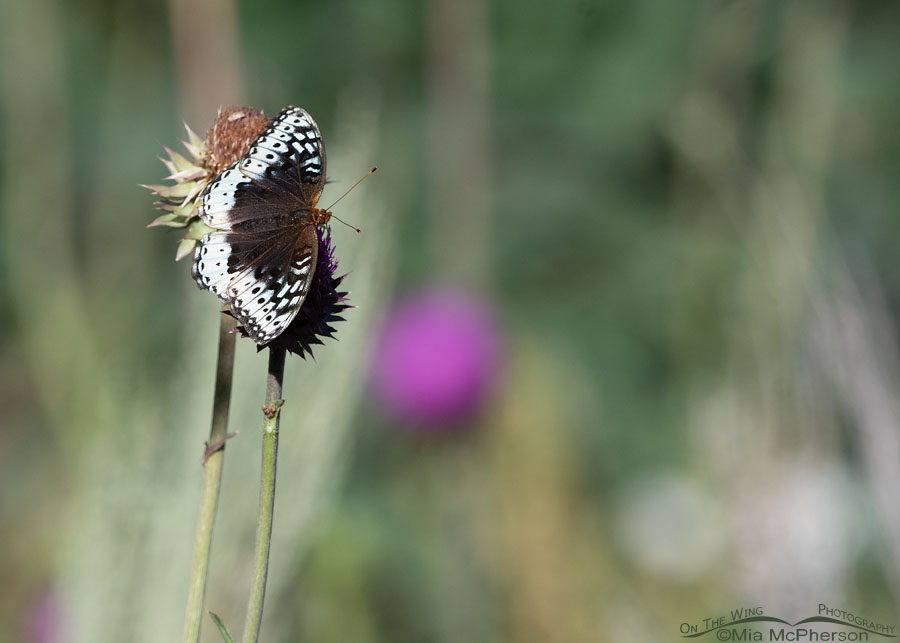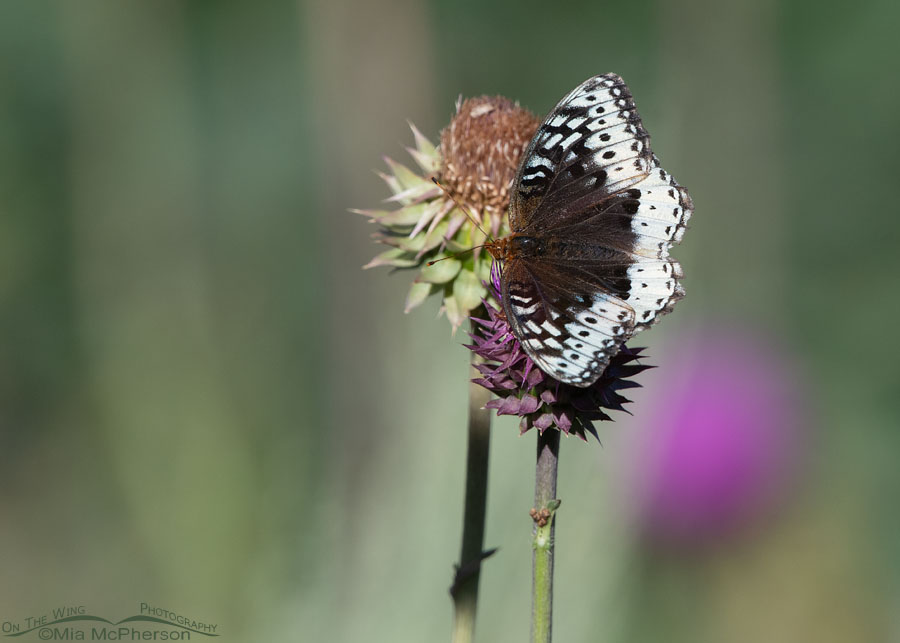 Female Great Spangled Fritillary butterfly in the Wasatch Mountains – Nikon D500, f7.1, 1/2000, ISO 500, -0.3 EV, Nikkor 500mm VR, natural light
Female Great Spangled Fritillary butterfly in the Wasatch Mountains – Nikon D500, f7.1, 1/2000, ISO 500, -0.3 EV, Nikkor 500mm VR, natural light
As a bird photographer I spend many days in the field and while I am out looking for birds I also notice, observe, learn about and photograph other subjects because I know that everything in nature is connected. I pay attention to what I see when I am looking for birds, I check out the habitat I find them in, I listen to their songs and calls, I observe what they eat and make mental notes to use when I look for them in the future and I do that for other subjects as well.
Last year I saw an abundance of Great Spangled Fritillary butterflies in the Wasatch Mountains, it seemed that I could easily spot them flitting about or nectaring on thistles but this year I noticed that these and the numbers of other species of butterflies are way down in numbers and that is causing me to wonder why. Last summer I saw hundreds of fritillary butterflies and so far this year I’d say I’ve seen only a few dozen in the same habitat.
 Nectaring female Great Spangled Fritillary butterfly – Nikon D500, f7.1, 1/1250, ISO 500, Nikkor 500mm VR with 1.4x TC, natural light
Nectaring female Great Spangled Fritillary butterfly – Nikon D500, f7.1, 1/1250, ISO 500, Nikkor 500mm VR with 1.4x TC, natural light
I know that I am not alone in this. Many of my photographer friends have stated that they have seen a decrease in the numbers of butterflies they have found and photographed and I’ve seen articles about the same subject in the news. I know that my observations are purely anecdotal because they are my own personal accounts and not scientific studies but my observations and those of my friends across the country do cause me concern.
I hope that next year I’ll see an increase, not a decrease, in the numbers of butterflies I see.
Mia
Click here to see more of my flower, shrub and tree photos. Click here to see more of my insect and spider images.


Beautiful photos.
On this side of the world our flutterby numbers have been down as well. I hope it will change. I really hope it.
Yup, the numbers are down here in the East, at least in our bailywick (sp). However, I have contributed that fact to the decrease in number probably due to our cold, wet spring. August we saw a resurgence in butterfly species, and on the bright side a higher than normal Monarch numbers this year.
Your images of Great Spangled Fritillarys are wonderful and it is also the first time I have seen pictures of a black and white one, just beautiful. Does that mean the orange ones are male? We have the Great Spangled here too, but I have only seen the orange one.
Dick, I wish I could say I have seen an increase in the numbers of butterflies in August, I am seeing fewer now though than even two weeks ago. Rabbitbrush is coming into bloom now which attract lots of butterflies so I will be keeping an eye out for them.
Re: Great Spangled Fritillaries, yes, the orange ones are males.
I have noticed very few pollinators in general this year despite the bumper wildflower bloom. I wonder if our wet late spring had an affect?
Hopefully, it’s just natural cycling, but I do fear it isn’t. I usually see lots of Monarchs in my area around this time and have only seen a few lately.
If people want to, they can report butterfly and moth sightings here: https://www.butterfliesandmoths.org
And for other insects, there’s bugguide.net
For native bees, a new project from Worcester Polytechnic: https://beecology.wpi.edu/website/home
What a beautiful butterfly. Except for White Cabbage Butterflies, I have hardly seen any butterflies or moths this year. Scary.